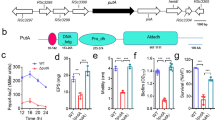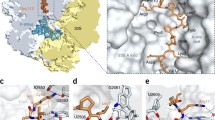Summary.
Proline transport is required for catabolism of proline as a carbon, nitrogen, and energy source, and for accumulation of proline during adaptation to osmotic stress. These physiological processes are widespread in nature, and play essential roles in the virulence of both prokaryotic and eukaryotic pathogens. In enteric bacteria, the major proline permease is encoded by the putP gene. To identify the structural features required for substrate recognition by PutP, we assayed the transport and toxicity of a variety of natural and synthetic derivatives of proline. The results indicate that the substrate binding site of proline permease consists of a hydrophobic pocket that accommodates C3, C4, and C5 of the pyrrolidine ring. Both 4- and 5-membered rings fit into the substrate binding pocket, but 6-membered rings are excluded. Analogs with substituents on the C4 position are also excluded. In addition, the binding site includes a hydrophilic region that recognizes the imino and carbonyl groups. A free carboxyl group is not required. Taken together, these results may be used to design new synthetic inhibitors of proline transport that can effectively block proline uptake by microbial pathogens.
Similar content being viewed by others
Author information
Authors and Affiliations
Additional information
Received November 1, 2000 Accepted December 1, 2000
Rights and permissions
About this article
Cite this article
Liao, MK., Maloy, S. Substrate recognition by proline permease in Salmonella . Amino Acids 21, 161–174 (2001). https://doi.org/10.1007/s007260170023
Issue Date:
DOI: https://doi.org/10.1007/s007260170023




